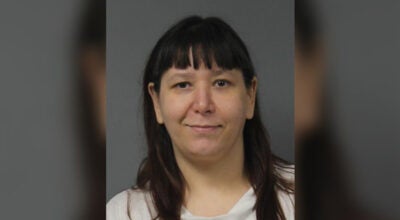Berrien County takes new measures against drugged driving
Published 9:34 am Tuesday, November 7, 2017
As fatal crashes resulting from drug impaired driving continue to rise across the state, legislators and local law enforcement have decided to take action and find a new way to keep drugged drivers off Berrien County roads.
Starting this week, Berrien County will join four other counties in initiating oral fluid analysis drug testing on the road side. The year-long pilot program, called The Preliminary Oral Fluid Analysis, may require a person suspected of impaired driving to take a test, which will be conducted by a Drug Recognition Expert. The test will include a mouth swab to analyze oral fluid for controlled substance use. The program will be used in tandem with the 12-step evaluation currently utilized to determine impaired driving.
A civil infraction can be admitted to those who refuse the preliminary oral fluid analysis, according to the Michigan State Police.
Michigan State Police Special First Lt. Jim Flegel said protocol for when and why a driver is stopped will not change. He said DRE officers are trained to recognize the signs of a drugged driver. If they see a driver exhibiting these signs, they will initiate a traffic stop and may ask the driver for an oral fluid swab from an instrument that takes only five minutes to determine whether someone is under the influence of drugs.
The method is faster than waiting for the results of a blood sample and can detect more than alcohol, which is indicated in a preliminary breath test.
Drugged driving has caused hundreds of deaths across the state of Michigan and the number only appears to be growing.
According to Flegel, there have been 236 drug-involved fatal crashes, where the drivers were impaired by drugs in 2016. This is a 32-percent increase from fatal drug impaired crashes in 2015, which saw 179 fatalities across the state.
“Unfortunately, people make the decision to get behind the wheel high on drugs which endangers innocent people and themselves,” Flegel said in a phone interview Friday. “[We are] hoping it will give law officers another tool available to combat drugs and hopefully save people’s lives.”
The program will cost approximately $150,000 statewide to implement and is being supported through supplemental funding. The program was initiated through the establishment of Public Acts 242 and 243 of 2016.
Counties were selected for the program based upon data gathered from 2015 and 2016, which showed the number of impaired driving crashes, the number of arrests of impaired drivers and the number of trained Drug Recognition Experts in the County.
Because of their training to recognize drug impaired drivers, DREs will be conducting the roadside testing. Multiple agencies that have DREs, including county sheriff’s departments and township and city law enforcement will be involved in the program’s implementation.
“[DREs] will run them through standard field sobriety and they may offer them a preliminary breath test,” Flegel said. “Or if they think they are on drugs they might submit to an oral fluid swab. Once they obtain a swab … that instrument would provide results within five minutes.”
Once a year has passed, Flegel said the counties will have 90 days to submit results to the Michigan legislature. Per the results, the program could be continued, Flegel said.






